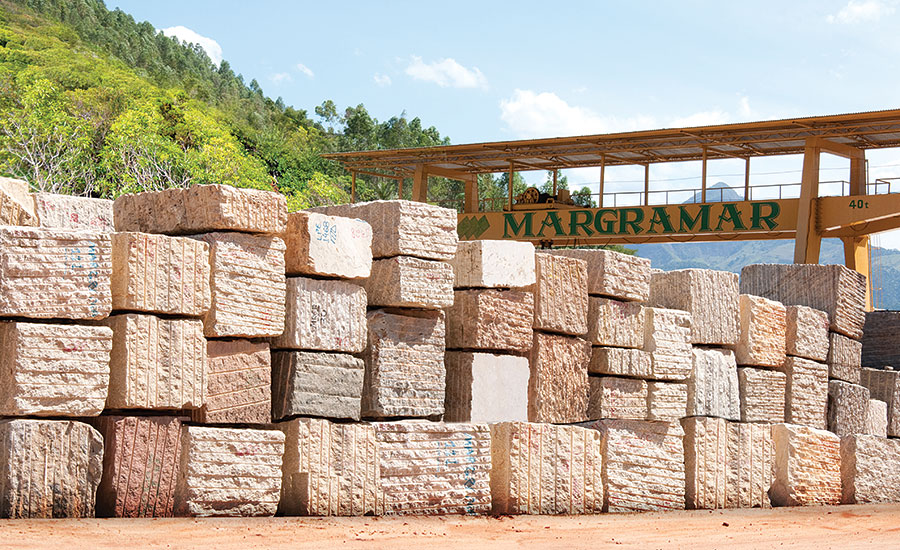Introducing the Mysteries of Granite Quarrying: Where Strength and Elegance Meet
The globe of granite quarrying is a world where the raw stamina of nature assembles with human virtuosity to create structures that stand the examination of time with an air of beauty. From the midsts of quarries to the meticulous sprucing up in workshops, the procedure of transforming granite into building wonders is an intricate dance of practice and advancement. As we peer into the depths of this ancient craft, we start to reveal the covert details that shape the extremely essence of our constructed setting.
The Origins of Granite Quarrying
In the annals of building background, the origins of granite quarrying are shrouded in a tapestry of ancient craftsmanship and geological marvels. Dating back to old Egypt and Mesopotamia, the extraction of granite from quarries noted the start of a trip that would ultimately cause the production of a few of the globe's most legendary frameworks.
Granite quarrying's origins can be traced to the skilled artisans who acknowledged the rock's longevity and aesthetic charm. Through a mix of primitive tools and large resolution, these very early quarry employees uncovered granite blocks that would certainly end up being the structure blocks of people.
As people evolved, so did the techniques of quarrying granite. The Romans, renowned for their engineering expertise, created advanced approaches for extracting granite to create monoliths, holy places, and roadways that stood the examination of time.
The legacy of these ancient quarrying methods continues to shape contemporary style, with granite remaining an icon of toughness and elegance in building and construction jobs around the world. (granite quarries in south africa)
Tools of the Quarrying Profession
The development of granite quarrying strategies from ancient people to modern times highlights the critical function played by the devices of the quarrying profession in shaping the sector's techniques. In ancient times, quarrying devices were primary, typically containing knives, hammers, and wedges made from products like bronze or iron. These tools needed significant manpower and time to extract granite obstructs from quarries.

Additionally, the intro of pneumatically-driven devices and high-powered equipment has actually substantially minimized the physical labor required in quarrying operations, enhancing worker safety and efficiency. As the quarrying market remains to innovate, the tools of the trade remain More Bonuses at the center of driving progression and shaping the future of granite removal.
Extracting Blocks of Granite
Making use of precision machinery and progressed techniques, the removal of granite blocks from quarries has actually become a sophisticated procedure in the modern quarrying industry. The preliminary action involves identifying the area and dimension of the granite down payment to identify one of the most effective removal approach. As soon as an ideal site is selected, the extraction process begins with the exploration of openings for the placement of dynamites. Regulated blowing up techniques are after that employed to break apart the granite into manageable areas.

Sprucing Up and Completing Methods
To accomplish a perfect surface on granite blocks, experienced artisans utilize a collection of precise sprucing up and ending up techniques. After the preliminary removal and forming processes, the granite obstructs undergo a thorough sprucing up phase to boost their all-natural elegance and durability. One common approach used in brightening granite is ruby abrasion, where commercial rubies are used to grind and brighten the stone to a smooth finish. This procedure not only creates a glossy surface area yet likewise ensures uniformity in shade and appearance throughout the granite block.
In enhancement to polishing, completing strategies are used to published here additional fine-tune the granite's appearance. By thoroughly picking and using these brightening and completing strategies, craftsmens can transform raw granite obstructs right into splendid items that display both strength and beauty.

Ecological Influence and Sustainability
With the expanding emphasis on environmental consciousness in the industry, granite quarrying practices are progressively scrutinized for their impact on natural deposits and long-lasting sustainability. Quarrying for granite can have significant ecological effects. The removal process typically includes the usage of heavy machinery, explosives, and site here huge quantities of water, causing environment damage, soil disintegration, and water air pollution. Additionally, the transportation of granite from quarries to processing centers generates carbon emissions, even more adding to ecological degradation. granite quarries in south africa.
To alleviate these influences and ensure sustainability in granite quarrying, industry stakeholders are adopting various actions. Executing sophisticated technologies to reduce power usage and water usage, recovering quarried land for environmental reconstruction, and promoting responsible sourcing techniques are some strategies being used. Furthermore, qualifications such as the Forest Stewardship Council (FSC) and the Leadership in Energy and Environmental Layout (LEED) aid customers identify ecologically pleasant granite products.
Verdict
To conclude, granite quarrying is a process that requires specialized tools and techniques to extract blocks of granite and polish them to a high level of finish. While the environmental effect of quarrying can be significant, initiatives are being made to boost sustainability techniques in the sector. Overall, granite quarrying is a fragile balance in between harnessing the strength and style of this all-natural rock while reducing its effect on the setting.